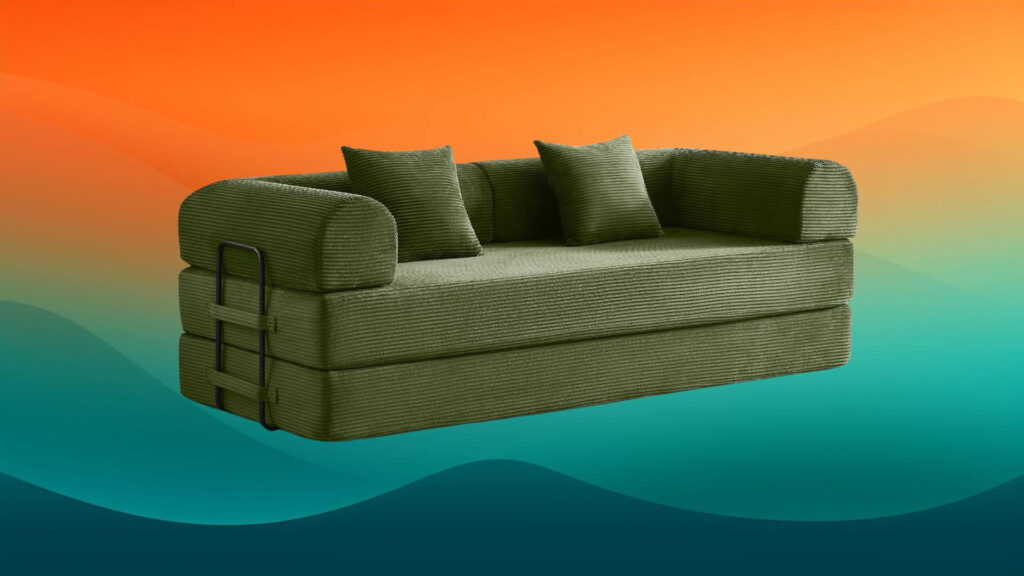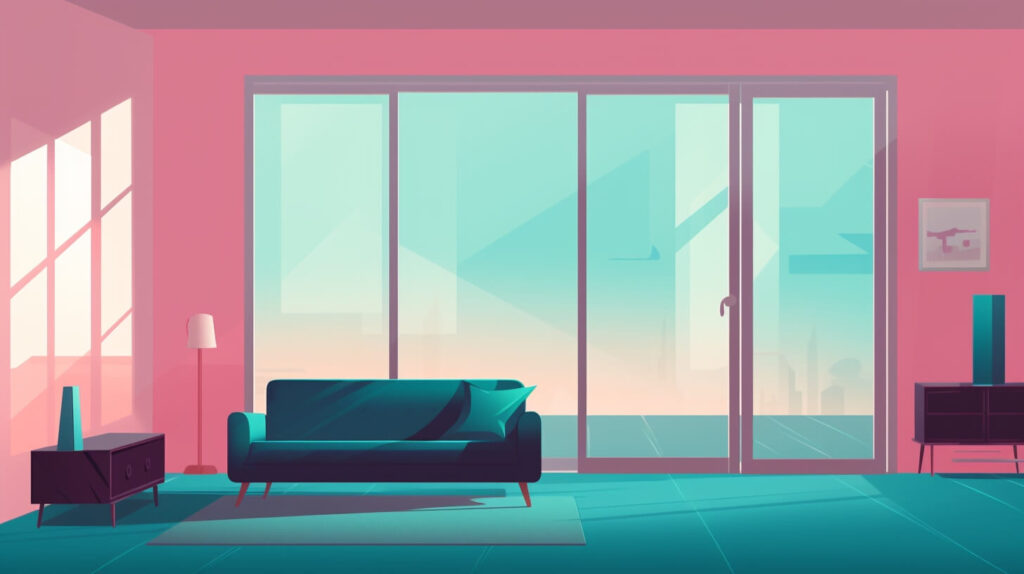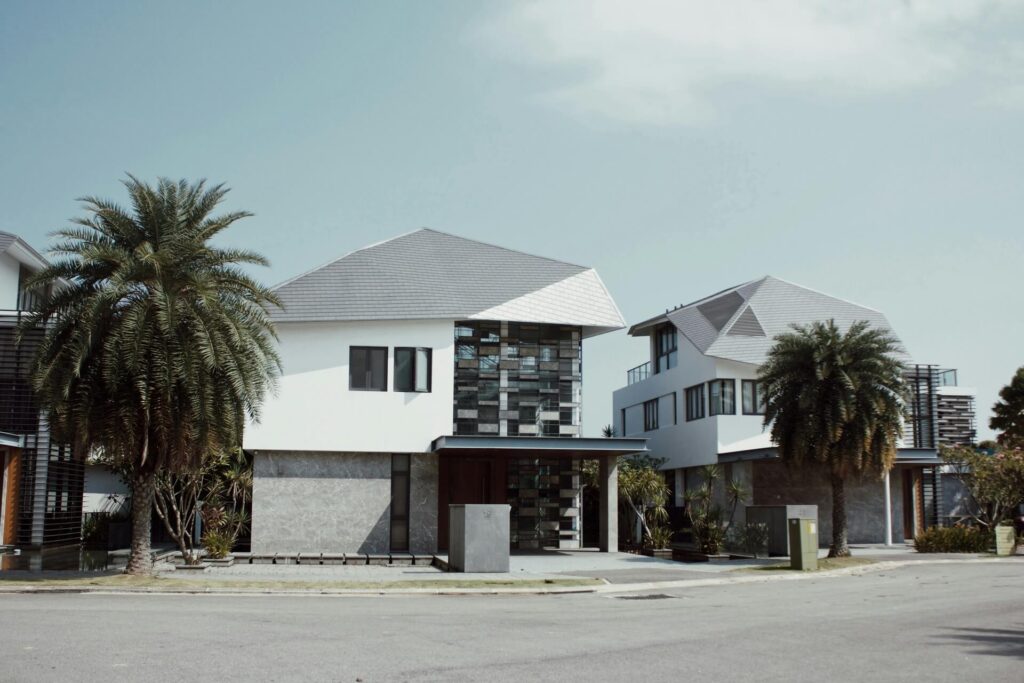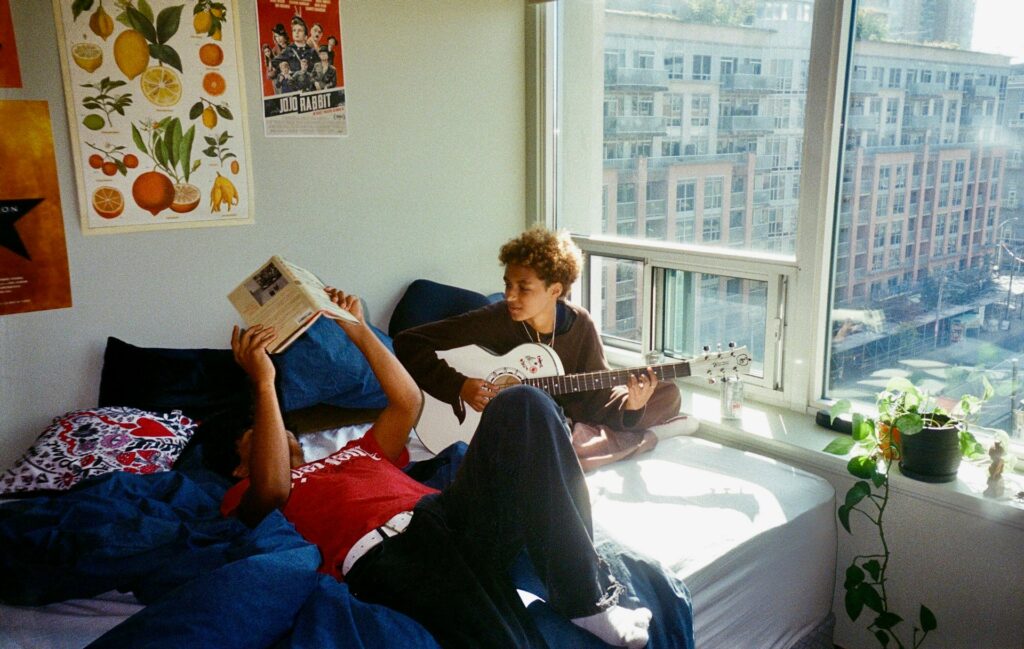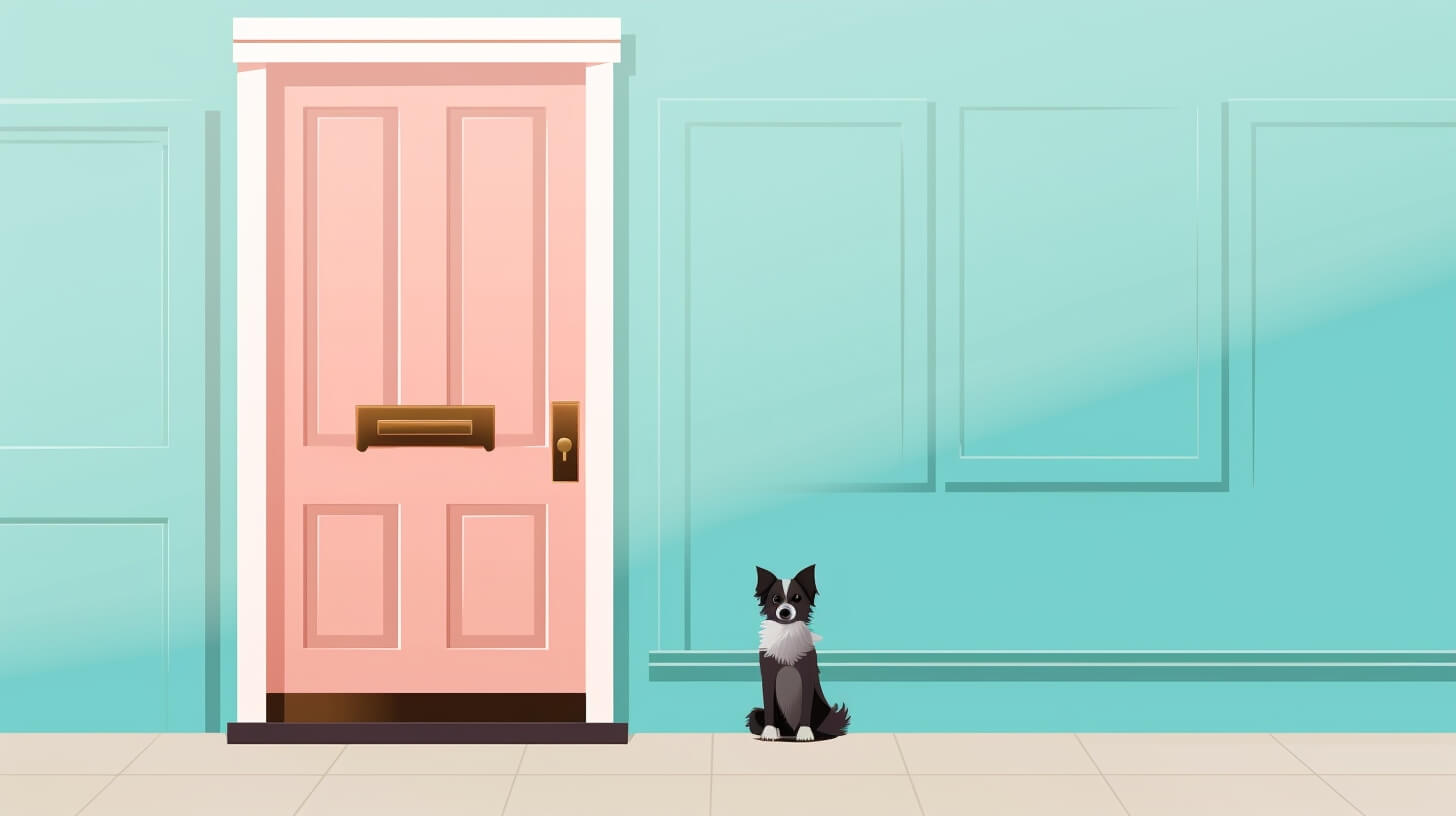
We are reader-supported. When you buy through links on our site, we may earn an affiliate commission.
Designing a home for both humans and pets means more than tossing a dog bed in the corner. Whether you’re a homeowner trying to protect your flooring from scratch marks or a real estate agent advising a pet-loving client, getting the layout and materials paw-proved makes all the difference to a pet-friendly house.
Here’s how to create an abode that provides space for two- and four-legged inhabitants while remaining safe, clean and happy.
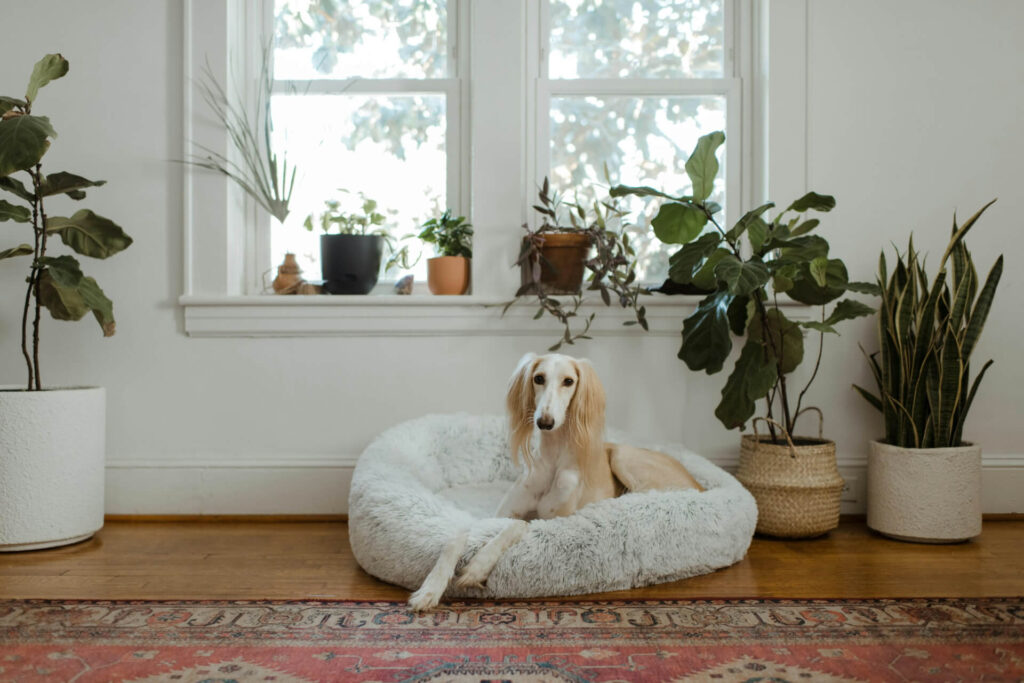
Start With the Surfaces
Use materials that can handle claws, fur, accidents and the occasional zoomie episode. Avoid delicate finishes and opt for durable, washable and scratch-resistant surfaces wherever possible.
- Flooring: Hardwood is beautiful and resilient, but softwoods like pine or fir can gouge easily. Choose durable surfaces like oak, tile, or luxury vinyl planks. These offer durability and easier cleaning. If you must have a rug, go for a low-pile, machine-washable one or indoor-outdoor rugs that don’t trap hair or odors.
- Upholstery: Microfiber and genuine leather are good choices for pets, as are tightly woven fabrics. Avoid anything with loose weaves, tassels or easily pulled threads.
- Wall finishes: Semi-gloss or satin paints are easier to wipe than matte finishes, especially when muddy paws and nose prints are involved. Opt for water-based latex paint, which is less toxic, and don’t buy into the “antimicrobial paint” sales pitch. There’s little evidence to support the efficacy of this, and it could be harmful to your pets if they lick the walls.
- Furniture: The surfacing of your furniture also needs consideration. While wood is pleasing, it can become a welcome relief for a teething puppy. If you’re getting a puppy, prepare the furniture with a sturdy wrap-around for exposed areas until the new family member learns to chew their toys, not your Quaker-style cabinets and sofas.
Prioritize Safety Inside and Out
Creating a pet-friendly house means scanning every nook with a new lens, as you would when bringing a human toddler home. You want to eliminate hazards while making everyday life easier for everyone.
Secure cabinets with childproof locks to keep cleaning products and medications out of reach. Use cord covers or conceal them inside walls or conduit pipes to prevent chewing. Prevent your floofer from turning into Superman with secure screens and safety netting on balconies or upstairs windows. Even cats with the best balance can slip.
A well-built fence at least six feet high is a must if you have a yard. Double-check that there are no gaps or escape points, especially if you aren’t always home or your dog loves jumping.

Monitor Pets With Smart Home Devices
Pet-friendly houses can also be tech-savvy — just hide the cables and remote controls. Smart home systems aren’t just for keeping burglars out — cameras and other monitors can help you keep an eye on your furry family while you’re away.
- Indoor cameras: Use motion-sensing pet cams to check in. Many now offer two-way talk and treat dispensers, allowing you to check in with your furry friends verbally. Like a nanny cam, these are ideal for checking on an ill pet while you’re at work. While fixed ones are great for convenience and aesthetics, a few portable Wi-Fi cameras are ideal for monitoring a specific room.
- Sensors and alarms: Set up smoke and carbon monoxide detectors that notify you by text message when levels rise above 70 ppm for a few hours or if these suddenly exceed 400 ppm, which is lethal. If a pet is home alone, early alerts can make all the difference should there be a fire. A few humidity sensors can also help monitor for leaks or if your doggo dragged the garden hose through the doggy door into the house while you are out.
- Temperature controls: Use smart thermostats to maintain a comfortable environment for your pets, especially during a heat wave.
- Home security systems: While you may believe that you don’t need burglar alarms if you have dogs, it’s better to have both. Plus, the security system can help you keep your pets safe while away. Discuss alarm options with your local service provider. Most motion detectors are fine with smaller pets, but large dogs may trigger these. Alternatively, perimeter alarms are a wiser choice.
Give Them Their Own Space
Pets thrive on structure, and a designated space fosters calm, especially during stressful events like thunderstorms or fireworks. Crate zones are a safe space or make a cozy den in a low-traffic corner using soft, washable materials. Some designer crates also double as furniture items, such as side tables or benches.
A planned pet nook is practical and makes for happy pets. Locate the feeding and watering stations in laundry rooms, mud rooms, or under-the-stairs cubbies, especially for your paw buddies. Combine these with sleeping spots with their day bed or nap pad. Locate these in low-traffic areas so there’s less risk of tripping over a water bowl or spilling the dried dog kibble.
Consider cats with climbing shelves, window perches or tall towers to keep them stimulated and off your countertops. Sliding pet doors and gates help separate your fur buddies during feeding time so they can eat peacefully without competition. It also lets you keep them secure if you have visitors who are allergic or don’t like pets or if the cable technician is there and Fido doesn’t like them.
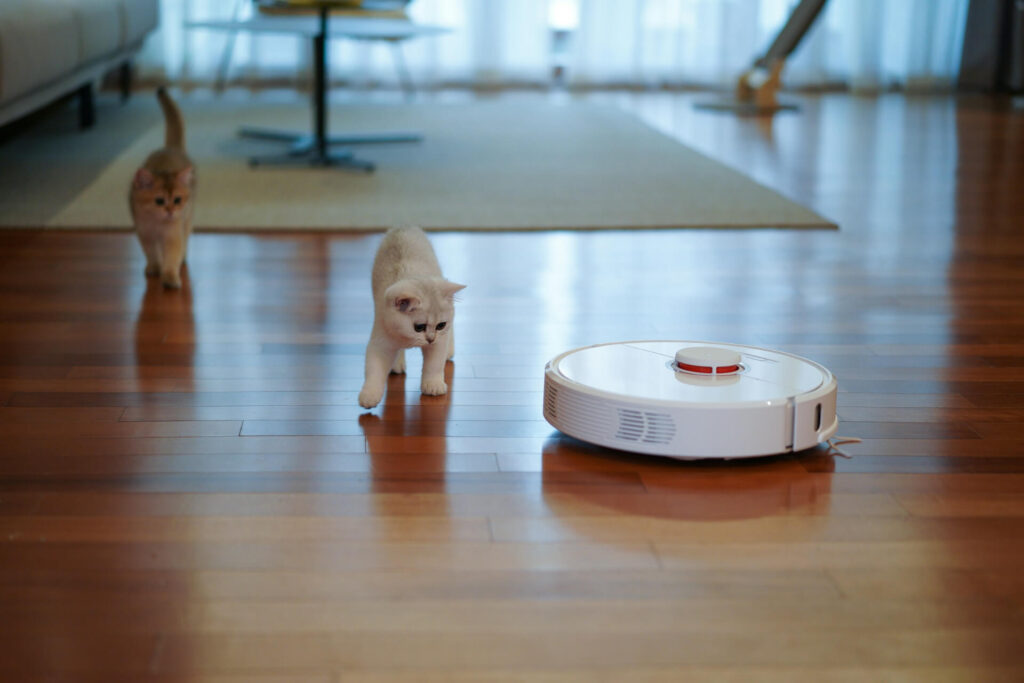
Design With Cleaning in Mind
Any pet, whether on best behavior or with the highest pedigree, will drool, shed and occasionally have accidents. A hygiene-friendly home design makes life easier and keeps your property looking great for guests or future buyers.
Invest in a high-powered vacuum system with a high-efficiency particulate air (HEPA) filter. HEPA filters minimize environmental pollutants by 99.97% in your home and remove dander, dust, pollen and other microscopic organisms from your space as you clean. If you have the space, create a dog-washing station, which preserves your bath and saves your back. A handheld sprayer with nonslip flooring is a great choice.
Store pet cleaning supplies strategically, including clean rags to dab at spills on carpets and upholstery, enzyme-based cleaners and spray bottles with a little baking soda and vinegar for spot treatments. Wipes and lint rollers can round out your cleaning collection, and no pet household should be without these.
Durable, nonslip runners and mats in the transition zones between rooms can prevent slip-related spills and breakage. These can help keep pets on their paws when they have zoomies or rush outside.
More Pet-Friendly House Questions
What’s the Best Type of Flooring for a Pet-Friendly Home?
Hard-surface flooring like tile or luxury vinyl plank is best for animals in your house or apartment. These resist scratches and accidents and are easy to clean with less risk of staining. Avoid carpets and softwoods, which are easily damaged.
How Do I Keep My House From Smelling Like Pets?
Use washable rugs, regularly clean upholstery and vacuum with a HEPA filter vacuum cleaner. Add an air purifier and use enzymatic cleaners to neutralize odors at the source. Regularly bathing your pets also helps with shedding and smells.
Are Smart Devices Really Worth It for Pet Owners?
Smart cameras, thermostats and motion sensors let you monitor your pets while away to ensure they remain safe and comfortable, especially when you’re away from home often.
How Can I Keep My Pet Safe During a House Fire or Emergency?
Install pet-alert window decals to inform first responders of any animals inside your home. Keep leashes, carriers and emergency kits near exits, and consider smart alarms that notify you via phone when you’re not home.
Are Home Security Systems Compatible With Pets?
Many modern systems offer pet-immune motion sensors that ignore animals under a certain weight or size. You can also set up cameras with facial recognition to alert you to intruders without triggering false alarms.
A Happy Pet and Home
Designing a pet-friendly house doesn’t mean compromising on comfort or style. With the right surfaces, safety measures and smart layout, you can enjoy a cleaner, calmer and cozier space for you and your pets. Whether you’re planning a new build, renovating or helping clients visualize their future home, keeping fur babies in mind from the start makes all the difference.


